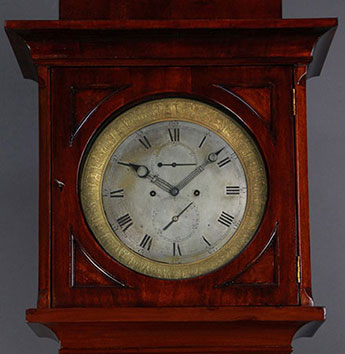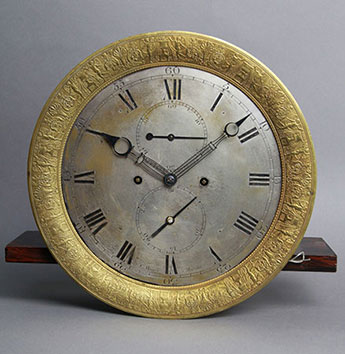Collection of the Russian Clock Museum
Among the exhibits of the Orel Russian Clock Museum (https://vk.com/russianclocks) there are several clocks with conservative designs, which is not typical for the furniture of the second quarter of the 19th century when they were produced. These are the clocks in mahogany cases made in the English Georgian style of the late 18th century.
English clocks were very popular among the Moscow public in the 1830s and 1840s and were considered to be the most durable and reliable clocks. However, only clocks of the end of the 18th century were on sale, and it was impossible to find new ones due to the customs policies of the time. For example, in the newspaper "Moskovskie Vedomosti" of that time, there were lots of private ads offering to buy "a carriage, a dining room set and the most reliable English Norton clock" (which was, probably, about 40-50 years old at the time of sale!).
Manufacturers of expensive clocks could not help but cater to the preferences of the buyers, and the clock by Moscow clockmaker Christian Himer can serve as an example of such a work that copied some features of the classical English clocks of the Georgian era.
Himer was a temporary (visiting) merchant and clockmaker. He worked in Moscow from the mid-1840s to the early 1860s. In 1852, his workshop was located on Tverskoy Boulevard, in the house of Krekshina. Unfortunately, his dates of birth and death, as well as other life details, are unknown.
One of the most distinguished features of his clock was a heavy pendulum which was attached to the back panel of the clock case and not to the mechanism itself as was customary at the time, as well as the rich design of the clock face and its frame. The arms are also of interest: they are the typical Moscow clock hands of the 1840s. The Butenop brothers installed similar ones on the clock of the Grand Kremlin Palace in 1849 and the chiming clock on the Spasskaya Tower of the Moscow Kremlin, during the repair in 1850.
There are three currently known signed clocks by C. Himer in private collections in Russia and two unsigned clocks that can be attributed to him with sufficient certainty.
Author: Oleg Sinegubkin
The Russian Clock Museum is a member of the Association of Private and People's Museums of Russia.
Source: vk.com
Calligraphy is a remedy and mental gymnastics.





